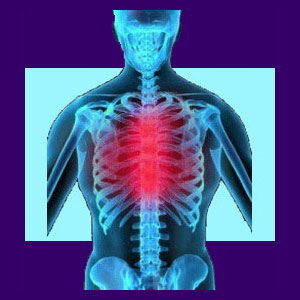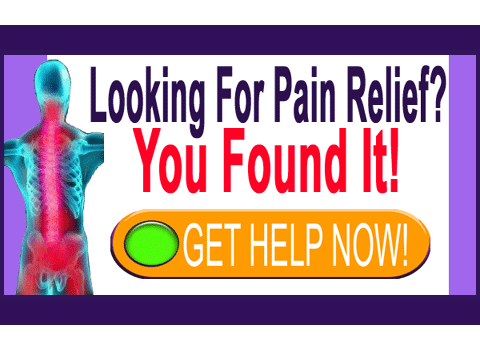
Nonsurgical relief from spinal stenosis may be difficult to find for patients with actual structural issues enacting a symptomatic canal narrowing condition in their vertebral column. Stenosis that is not caused by intervertebral disc pathologies generally does not respond well to conservative care, forcing most patients with severe neurological impingement to eventually seek operative expansion of the central canal space. However, many people who are diagnosed with spinal stenosis are not suffering from the physical changes which have occurred in their spines. No, in many cases, the stenosis demonstrated is typical and expected as part of the aging process and is coincidental to any symptoms experienced. This is precisely why it is so critical to take an active role in your own care to prevent misdiagnosis and wasted time pursuing inappropriate and unnecessary treatment for spinal stenosis.
This commentary examines how different causes of spinal stenosis generally respond to a variety of care practices. We will examine the best ways to attain relief from spinal stenosis conditions, as well as how to recognize potentially misdiagnosed stenosis that is incorrectly deemed causative for painful symptoms.
Relief from Spinal Stenosis from Misdiagnosis
It is normal for the spinal canal to narrow as we get older. The build-up of osteophytes, and the cumulative effect of the arthritic processes, will create stenosis in the neck and lumbar regions of many patients who are past middle age. Some degree of spinal stenosis is virtually universal in the elderly.
Most cases of typical stenosis will not cause any significant or lasting pain or any neurological symptoms. In these scenarios, stenosis exists and might be formally diagnosed, although it resides in purely asymptomatic form. This describes the majority of all structural reductions of central canal patency, regardless of where they occur in the vertebral column. When symptoms do not exist, there is no problem with simply diagnosing stenosis. This is because without symptoms, treatment is generally not needed or requested. However, when symptoms do exist, but are caused by another source process besides the stenosis, real problems can result.
Stenosis might be coincidental to another causation of back or neck pain. This occurs in many patients. If the stenosis is theorized to be the true origin of symptoms, then this error is likely to move the patient ever further from the correct path toward finding effective relief. Instead, the patient is likely to undergo conservative, moderate and eventual surgical care that will likely resolve the stenosis, but will do nothing to cure the symptoms, as these treatments are not directed at the correct actual origin.
Being that stenosis becomes ever-more common as we get older, we unfortunately see this type of patient profile often; typically in the letters we receive asking in desperation for help after failed spinal surgery. Patients with usual mild to moderate stenosis are warned that this occurrence happens every day. Be sure to get multiple diagnostic opinions, confirming that the stenosis is definitively compressing neurological tissue, before seeking any type of stenosis-targeting care.
Relief from Stenosis Nerve Impingement
Symptoms may occur from purely anatomical reasons when the spinal cord or cauda equina are compressed to a significant degree by permanent changes in the spinal anatomy. Luckily, only a small percentage of diagnosed patients will experience severe and possibly debilitating symptoms which will require active treatment and the possible application of surgical intervention.
Most patients with symptomatic stenosis will first have to endure many attempts at noninvasive care. Typically, they will be given physical therapy, placed on a diversity of pharmaceutical drugs and might even receive one or more epidural injections.
Since the stenosis is caused by permanent changes inside the spinal canal, none of these care regimens have any chance of correcting the canal narrowing. Instead, it is clear from the beginning of treatment that these therapy methods serve 2 main purposes:
First, a variety of conservative care approaches will allow maximum profitability from the treatment protocol. In essence, doctors will make far more money trying to treat the stenosis without surgery first, since they know that surgery will eventually be utilized anyway. Why not make some money here and now? Better yet, why not share the wealth with your colleagues by getting them in on the action? After all, they will reciprocate and everyone can become opportunistic wealth-builders.
Second, many health insurance plans require several attempts at conservative therapy before they will authorize surgical treatment to be a covered expenditure. This is ironic, since these penny-pinching companies will literally allow people to die to save a dollar, but they are actually spending so much more money by implementing this ridiculous regulation, being that permanent versions of stenosis will virtually never respond to nonsurgical care.
The only good thing about trying conservative care is that if it actually works, then the condition is likely to be misdiagnosed and the efficacy of treatment might actually point out this glaring diagnostic blunder and save the patient from surgical hell. Unfortunately, this is not even a point to be considered by most physicians during the nonsurgical treatment process.
Relief from Spinal Stenosis Due to Transient Changes
Transient types of stenosis, such and those which are enacted by intervertebral disc pathologies and ligamentous issues, might resolve all by themselves or with purely conservative care. In fact, these conditions often do better with nonsurgical methods of treatment than with invasive interventions.
Many herniated discs and ligamentous hypertrophic conditions will become asymptomatic without any care. Pressure can decrease organically, as the condition resolves or lessens in severity naturally. For disc and ligamentous stenotic changes that do not resolve, a selection of conservative therapies might prove useful, while others might be a waste of time, money and effort.
The best hopes for providing relief from spinal stenosis due to transitory disc issues include decompression therapy, using a proven system like the DRX9000, specific forms of chiropractic manipulation, such as the Cox technique, or targeted injection and minimally invasive surgical therapies that might resolve the herniation without traditional open surgery.
Enjoying Lasting Relief from Vertebral Stenosis
Spinal stenosis is deceptive and difficult to accurately diagnose. In many cases, the patient will have severe stenosis in the cervical spine, but experiences pain and weakness in the legs. A coincidental herniated lumbar disc or two may be found and blamed for the pain, when the real issue is cervical cord compression
In other patients, the stenosis changes are blamed for pain in virtually any part of the anatomy, but the structural issues are not at all symptomatic and mask a true structural, nonstructural, disease-oriented or mindbody causation found elsewhere.
It is a sure fact that the best way to overcome any potential spinal stenosis problem is to attain a definitively accurate diagnosis, but this seems like a difficult proposition to achieve in most cases. When the diagnosis can be confirmed, statistics show that permanent types of stenotic changes respond best to minimally invasive surgeries. Just remember that these types of interventions are effectual, but also feature considerable risk factors to consider.
Meanwhile for confirmed diagnoses of transient canal narrowing, nonsurgical therapies, or the least invasive types of spinal procedures, might be best suited to bring about relief from spinal stenosis. The best path towards a cure certainly is wholly dependent upon the actual cause of the symptoms. Identify this process correctly and finding relief is well within reach. Misidentify the actual cause and relief becomes an impossible dream, regardless of the extreme nature of the treatments that will eventually be utilized.






